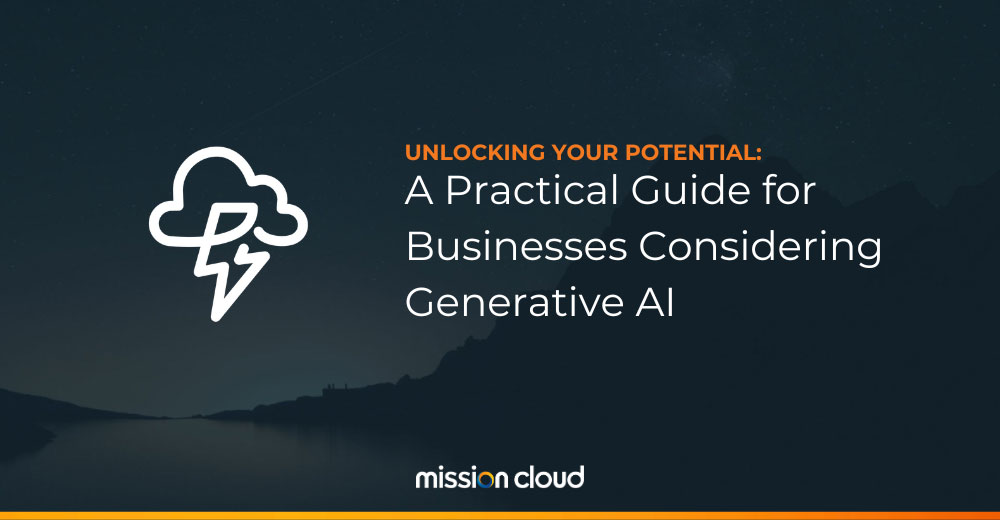Generative AI produces outputs with increasing similarity to human-generated content — and with exponentially greater efficiency.
This technology is still in development, but its potential uses are vast. Gen AI is skilled at integrating natural language into various work processes. Businesses can use these features to their advantage, accelerating analysis, summarizing large documents, coming up with fresh ideas, and boosting productivity and performance.
If you are ready to begin using transformer-based language models for solving various language tasks, download the early release chapters of this O’Reilly ebook, “Designing Large Language Model Applications.” With this book, you’ll learn the tools, techniques, and playbooks for building useful products that incorporate the power of language models.
The initial investment might seem daunting for businesses considering using AI. They must evaluate whether it’s worth the cost and excitement. However, practical guidelines are available for those looking to start exploring Generative AI, which can aid in making the right decision.
Start by Defining Your Use Cases
Incorporating Gen AI into your business need not be an overwhelming endeavor. To tailor it to your specific needs, follow these practical steps:
- Start Simple: Define your goals precisely. Gall’s Law emphasizes that a functional complex system usually evolves from a simpler one. Begin with a basic foundation that can be expanded upon later rather than diving into a grand, intricate system from the outset.
- Be Practical: Opt for small, realistic projects. Designing a massive system without the necessary expertise can lead to failure. Focus on achievable goals; for instance, a law firm might automate document sorting and analysis for potential clients.
- Identify Specific Objectives: Break down your goals into specific tasks and objectives. Understand the steps, inputs, and expected outputs required to accomplish them. Whether working with text-to-image or text-to-text technologies, comprehending the process is essential.
- Consider Your Existing Systems: Assess how your project integrates with current systems or applications in your company. This meticulous consideration ensures seamless alignment, streamlining implementation.
By following these steps, you can develop a Gen AI strategy that is both attainable and beneficial for your organization. It revolves around starting small, prioritizing essentials, and progressively building, always centering on your specific business requirements.
Assess Risks for Each Use Case
Utilizing Gen AI in your business is an exciting prospect, but it’s essential to be aware of several critical considerations.
Security must be top of mind, especially if you’re considering free or open-source Gen AI solutions. These platforms can pose risks to your confidential information, as any data entered might be used to train the model. The safest course is to avoid using sensitive business data with these platforms altogether. Even with expert-built enterprise solutions that offer more robust security, vigilance is required to prevent unauthorized access or misuse.
Accuracy is another vital concern. Gen AI’s approach can sometimes result in “hallucinations” or inaccurate outputs. As explained by Max Goff, a Data Science Consultant at Mission Cloud, Gen AI creates something new from what wasn’t there before. It bases its decisions on probabilities, meaning it might “make some stuff up.” Understanding this possibility helps in effectively evaluating the results.
Legal and regulatory considerations must also be navigated carefully. Ownership, licensing, compliance, and regulation all require thorough assessment and understanding. Identifying how each of these factors could impact your business and taking the necessary precautions will help mitigate risks.
Lastly, it may be wise to start with smaller projects. By doing so, you can closely monitor your workflows, assess risks, costs, and performance, and understand the real value Gen AI offers. This allows for informed decision-making as you potentially scale up.
Evaluate Your AI Performance
In Gen AI, assessing performance transcends numerical metrics involving a delicate balance of cost, value, size, and effectiveness.
While larger models were once deemed superior, recent progress challenges this notion. Size isn’t always indicative of quality; often, more streamlined alternatives prove just as effective. Fine-tuning models to target specific tasks, industries, or knowledge domains can yield comparable results without the need for massive structures.
Amazon Bedrock exemplifies this approach, offering pre-trained Foundation Models, eliminating the complexities and costs of managing colossal models. Access is simplified through an API, bypassing the need for endpoint creation. It’s like having a powerhouse readily available.
Amazon SageMaker JumpStart offers a similar path with nuanced distinctions, like the requirement for SageMaker functions in endpoint setup. For those venturing beyond AWS, hosting open-source models on an EC2 instance or deploying an endpoint via SageMaker presents additional architectural options.
In essence, the Gen AI landscape is diverse and adaptive, offering tailored solutions rather than a one-size-fits-all approach. It’s about selecting the right tool for the task, whether a robust model or a finely-tuned marvel. Embrace the versatility, explore the options, and let Gen AI streamline your operations efficiently.
Understand the Context
Once you’ve chosen a Gen AI model and determined its hosting, the true customization process begins. This phase requires a delicate interplay of fine-tuning, prompt engineering, and grasping the context.
Context is paramount in Gen AI work, especially as these models are trained in languages like English and can be specialized for tasks like conversation or industry-specific functions. Think of it as a specialized tool: a language model tailored for casual chat will differ in vocabulary and focus from one honed for health care.
Max Goff emphasizes understanding this continuum of context in model interactions. On one end, you have cost-effective, straightforward interactions, like using pre-made interfaces such as MidJourney or Dall-E. “What you see is what you get to interact with. That’s low cost, it’s easy, and a good way to go,” Goff suggests. On the opposite end, there are high-cost, complex implementations, like training a model entirely from scratch, demanding substantial GPU time and data resources.
The exciting part lies in the balanced middle ground, a sweet spot offering tailored functionality without extravagant costs. Instead of starting from scratch, you can refine an existing model to suit your specific needs. Techniques like prompt engineering or retrieval augmented generation (RAG) enable you to enhance a model with extra data, sculpting it into the perfect tool for your intended output.
Whether you require something swift and straightforward or highly specialized, there’s a method to meet your needs. The art lies in comprehending the context, knowing your available tools, and shaping them to perform precisely as you envision. This process unlocks avenues for innovation, efficiency, and boundless potential for your project or business.
Be Aware of Governing Policies
Governments worldwide are intensifying their oversight of AI development and usage with evolving policies addressing data security, bias, and accountability. Staying abreast of current laws and anticipating pending legislation is imperative to navigate potential impacts on your business.
AI governance varies across borders, necessitating awareness of each country’s specific regulations. Certain industries, like legal or health care sectors, may have additional restrictions. The rapid growth of Gen AI has often outpaced regulatory frameworks, creating complexities in interpretation. This has led companies to assume self-regulatory roles.
Even in the absence of explicit policies, businesses must prioritize ethical considerations in Gen AI initiatives. This encompasses robust data security, privacy safeguards, and measures to mitigate bias and discrimination. All system implementations should uphold individuals’ rights and privacy with utmost respect.
Partner With Experienced AI Experts
Unlocking the full potential of Gen AI is about more than following a set of rules; it’s about wielding this powerful tool with wisdom and intent. The goal isn’t to force models into cumbersome processes — but to harness them effectively and responsibly.
These large language models might seem magical, but they’re not without challenges, and retreat isn’t an option at the first sign of failure. Monitoring, adaptation, and vigilance are critical. Remember, today’s mighty models may be a glimpse of what’s coming tomorrow.
Need guidance on this exhilarating journey? Mission Cloud stands ready as an AWS Premier Tier Services Partner with recognized Data and Analytics and Machine Learning competencies.
Over the past year, Mission Cloud has been working with Generative AI, exploring the models and diving into use cases. With our long-standing AI/ML expertise, we can help you define your goals, separate the hype from reality, and realize your business objectives with the models and infrastructure that fit your aims when you book this complimentary 60-minute consultation.













































